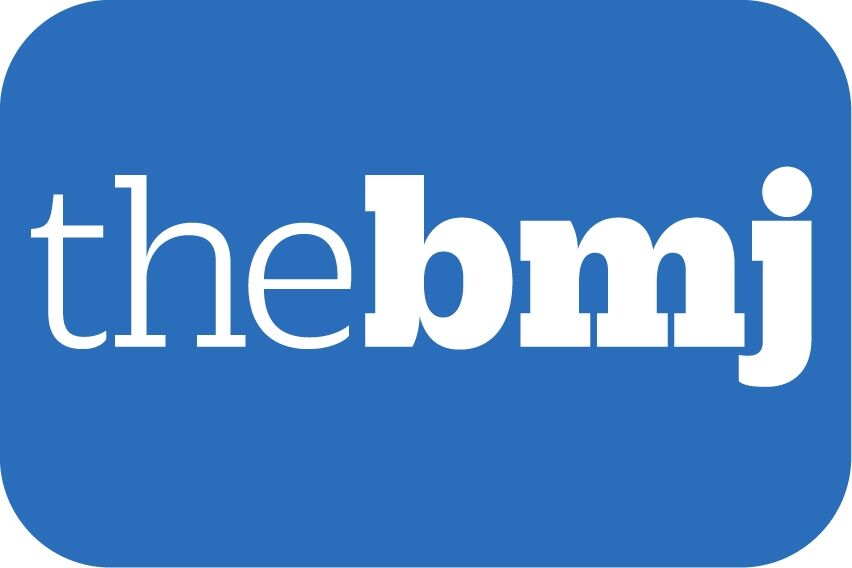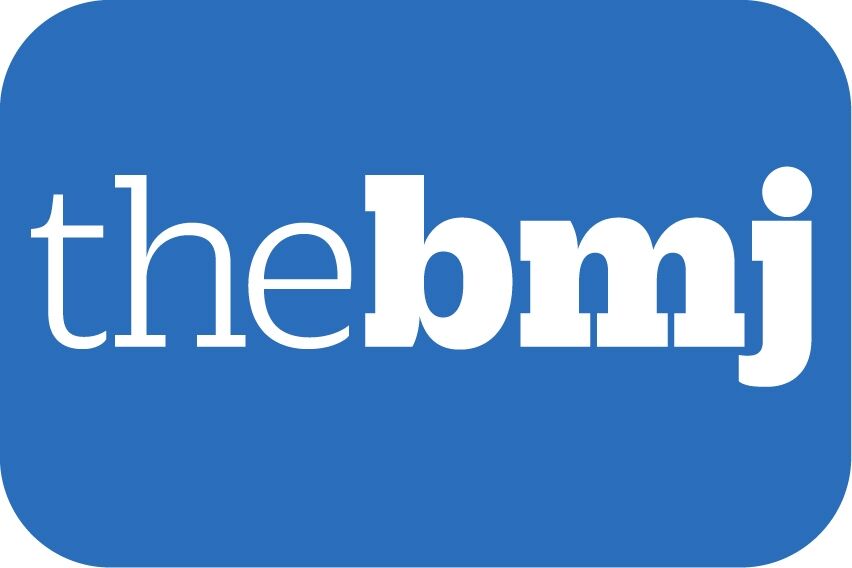内容精选
Content Selection
《英国医学杂志》主编推荐
The BMJ Editor's Choice
-

-
Information and drugs at our fingertips
时间:2016-08-18
发布:Sophie Cook, clinical editor
分享:
International groups of patients are linking up 24/7 through social media to disseminate knowledge, provide peer support, and offer clinical advice. And all of this is delivered quickly, at the touch of a button.
Evolution of patient groups from infrequent local meetings in person to virtual international networks is surely a good thing? Stephen Armstrong explores the role of social media in patient support (doi:10.1136/bmj.i4201) and considers the benefits, ethical dilemmas, and confidentiality issues that arise. Maureen Baker, chair of the Royal College of General Practitioners, acknowledges the huge benefit of such groups but cautions that “these forums should not be seen as a replacement for proper medical care.”
The messages from patients, however, seem to be of hope and relief at the opportunity to share and connect across a wider expert group. In a BMJ Blog Matthias Wienold talks about his involvement with the Cluster Headache Support Group and describes how a Facebook group with more than 8000 members contributes to research and enables patient engagement and conferences (http://blogs.bmj.com/bmj/2016/06/15/how-an-online-patient-group-proved-its-value-to-me). This is a testament to the benefit these forums offer beyond provision of support to individuals.
Although social media have revolutionised access to information, concern remains over delay in access to new treatments created by existing models of drug development. Courtney Davis and colleagues (doi:10.1136/bmj.i4437) scrutinise the European Medicines Agency’s new “adaptive pathways” approach to drug testing and marketing, a model designed to accelerate the delivery of new drugs that answer “unmet medical needs.” But the approach relies on preliminary clinical data, surrogate outcomes, and observational studies, which may “risk reaching incorrect conclusions about the benefit-harm balance of new drugs,” they say. The German Institute for Quality and Efficiency in Health Care (IQWiG) is also concerned and has called for the scheme to be paused (doi:10.1136/bmj.i4479).
Striking the right balance to satisfy everyone is a challenge, and although quicker access to new drugs is desirable, questions about safety remain to be answered.
Finally, what’s in a name? “Junior” doctor Michael Moran, who has a masters degree, a PhD, and 11 years of clinical experience, asks whether it’s time to update this ambiguous title (bmj.co/definejunior). Also on BMJ Blogs The BMJ’s patient editor, Rosamund Snow, explains that if she has to judge someone on seniority it is more likely to be based on their confidence and authority “than the colour of their scrubs or the latest medical acronym” (bmj.co/juniorpatient).
The jury is out on an appropriate alternative title (bmj.co/lavellejones; doi:10.1136/bmj.i4496) Why not respond to these articles with your suggestions?
BMJ 2016; 354 doi: http://dx.doi.org/10.1136/bmj.i4527 (Published 18 August 2016)
Cite this as: BMJ 2016;354:i4527 -

-
Hollow victories and hepatitis C
时间:2016-07-28
发布:Navjoyt Ladher, analysis editor, The BMJ
分享:
When Gilead Sciences introduced sofosbuvir based antivirals in 2014, the drugs were touted as a breakthrough for people with hepatitis C infection, promising high cure rates and fewer complications such as cirrhosis and hepatocellular carcinoma. But with astronomical prices challenging healthcare budgets and limiting access to these drugs, this promise remains out of reach for many patients.
A joint investigation this week by The BMJ and researchers from the University of Cambridge and the University of Bath shows the effect that highly priced medicines are having on the NHS and reveals the discord between the National Institute for Health and Care Excellence (NICE) and NHS England over their approval (doi:10.1136/bmj.i4117).
NHS England, fresh from criticism over its decision not to fund drugs for HIV pre-exposure prophylaxis (doi:10.1136/bmj.i3515), comes in for renewed scrutiny over its actions around NICE’s approval of sofosbuvir based drugs. Rather than making the drugs widely available within the statutory 90 days after approval, the investigation outlines how NHS England deployed a range of delaying tactics to limit access in light of budget concerns.
The story raises questions about the struggle between NICE and NHS England to balance cost effectiveness with budget impact. But the bigger question, raised by Mariana Mazzucato in a linked editorial (doi:10.1136/bmj.i4136) is why these medicines are so expensive in the first place.
NHS England is under unprecedented financial pressure (doi:10.1136/bmj.i4083), and it is no surprise that it cites Gilead’s pricing as a key reason why access to treatment has been delayed. An investigation by the US Senate Committee on Finance concluded that Gilead’s pricing strategy was “designed to maximise revenue with little concern for access and affordability.”
In this week’s Analysis, Victor Roy and Lawrence King describe how companies such as Gilead are acquiring promising compounds developed by smaller companies, driving up the speculative costs of drug development (doi:10.1136/bmj.i3718). With Gilead’s $35bn (£27bn) in revenue far outstripping its investment in sofosbuvir, and with profits largely directed to shareholders instead of further research and development, the classic argument that high drug prices are justified by the cost of development is on shaky ground.
In an Analysis article in The BMJ last year Narcyz Ghinea and colleagues called on drug companies to set a fair and just price for new medicines (doi:10.1136/bmj.i1284), arguing that “the triumphs of pharmaceutical innovation are hollow victories if they cripple health systems and generate massive inequities.” While healthcare systems arguably have a responsibility for delivering treatments they deem cost effective, the onus must be on drug companies to ensure that these promising treatments amount to more than hollow victories.
BMJ 2016; 354 doi: http://dx.doi.org/10.1136/bmj.i4170 (Published 28 July 2016)
Cite this as: BMJ 2016;354:i4170 -

-
Why drug approval needs better evidence
时间:2016-06-23
发布:Fiona Godlee, Editor in Chief, The BMJ
分享:
It’s good to see new NICE guidance on major trauma. Our summary of it (doi:10.1136/bmj.i3051) focuses on assessment of patients with major trauma and management of patients who are actively bleeding. It carries some new take home messages: avoid preliminary imaging when patients need immediate computed tomography; allow “permissive hypotension” in patients who are actively bleeding; and use blood rather than crystalloids or colloids.
The evidence base for managing trauma hasn’t always been good and in some areas remains controversial: think of the continuing bitter debate over crystalloid versus colloid (doi:10.1136/bmj.h1656, doi:10.1136/bmj.i1027). But the evidence has improved in quantity and confidence over recent years.
Not so for rare diseases. Efforts to develop treatments for these conditions are bedevilled by low return on investment and difficulty recruiting patients for large enough trials. Drugs tend to be approved on the basis of small, short term, placebo controlled trials that use surrogate endpoints. Regulators justify this leniency on the understanding that manufacturers will follow up with post-marketing studies. But does this happen, and what’s the result?
Roberta Joppi and colleagues reviewed the cumulative evidence for all six “orphan” products approved by the European Medicines Agency in 2004 (doi:10.1136/bmj.i2978). They found limited evidence at approval, which post-marketing research over the ensuing 10 years did little to improve on. In most cases the drugs performed no better or worse than comparators, but the original regulatory decisions were not revised, and manufacturers weren’t obliged to carry out further studies.
The authors say that the problem is not limited to rare conditions, as Huseyin Naci and colleagues found last year when they looked at drug approvals for glucose lowering in type 2 diabetes (doi:10.1136/bmj.h5260). This lucrative mass market has created a gold rush for “me too” treatments, with over 200 molecules in the development pipeline. But Naci and colleagues noted an equally growing list of drug withdrawals and black box warnings that should curb regulatory enthusiasm for “timely market access,” they said.
Both articles conclude that licensing agencies urgently need to demand higher standards of evidence before and after approval. Higher costs of evaluation should be more than offset by less spending on ineffective treatments, with better outcomes and fewer harms to patients. In the meantime, patients and their doctors need honest and open communication about the true strength of the evidence behind licensing decisions.
BMJ 2016; 353 doi: http://dx.doi.org/10.1136/bmj.i3483 (Published 23 June 2016)
Cite this as: BMJ 2016;353:i3483




 京公网安备 11010502034496号
京公网安备 11010502034496号